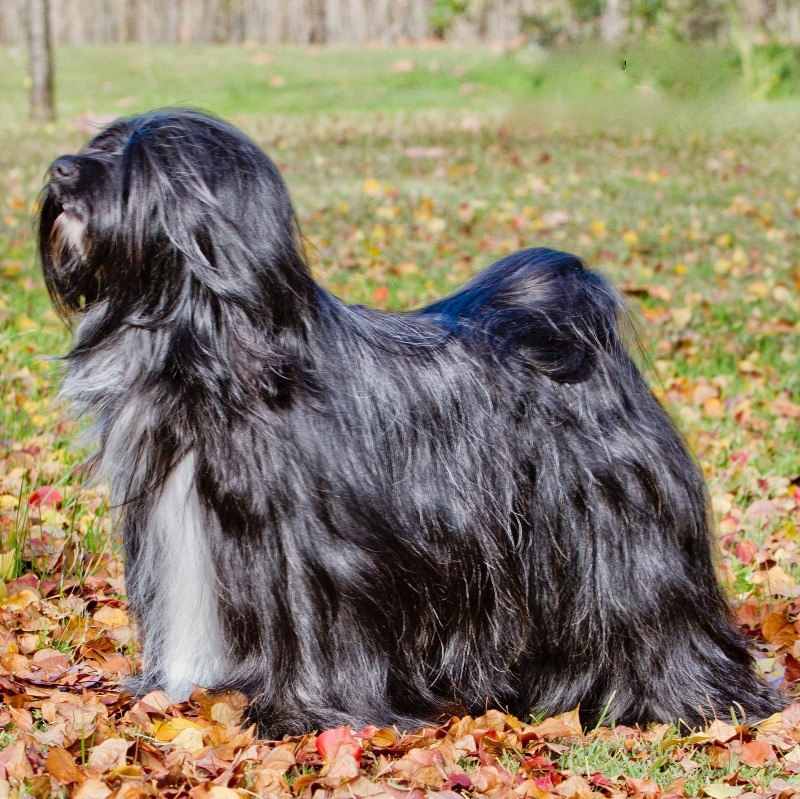Breeds
Tibetan Terrier

GROUP 7 - NON SPORTING
Brief History
Tibetan Terriers were originally bred to be companions and watchdogs for the Buddhist monastery monks of Tibet. The breed was also used by nomadic Tibetans to herd sheep, where the dogs would jump on the back of sheep to urge them on. It was believed that the Tibetan Terrier would bring good luck to their owners, and as such they were given as gifts and never sold.
Average Life Span
When considering a dog, please realise that you are taking it on for its lifetime. The average life span is 14 to 16 years.
Temperament
They are terrier by name but not by nature. The Tibetan Terrier is alert, intelligent, game and incredibly loyal to their family
General Breed Description
The Tibetan Terrier is a healthy, alert, active breed, very well suited to both indoors and outdoors. Tibetan Terriers are very clean, learn quickly and are great to live with and will adapt to almost any lifestyle. Tibetan Terriers are incredibly intelligent and can be very and as such this breed should be well socialised and trained from the puppy stage. The Tibetan Terrier comes in a variety of colours and colour combinations.
Coat and Care requirements
The Tibetan Terrier is profusely coated with long hair and therefore does require frequent bathing and grooming. Puppy coats are easy maintenance and grooming and bathing once a week should suffice. At around 12 to 18 months, when the coat is changing from puppy to adult, more frequent grooming is required. Generally, once a day grooming is required during this period to keep the Tibetan Terrier knot free. Once the adult coat is established, a good groom and bath once a week should suffice. Alternatively, some owners may prefer to have their Tibetan professionally groomed and maybe the coat clipped shorter.
Size
Height: Males 36 to 41cms (14 to 16ins), Females slightly smaller
Health
All breeds have individual health issues. When speaking to breeders in is recommended you enquire about breed health and what health testing the breeder does. The Tibetan Terrier is generally a healthy breed, however health conditions do occur occasionally. These may include hereditary eye conditions such as Progressive Retinal Atrophy and Lens Luxation. As a guide, DNA testing is available.
Suitability
They are an ideal pet for all owners and are great with families. As with all dogs, young children and pets should always be supervised when together. They are usually good with other dogs and cats, once acquainted, if socialised well as a puppy.
In Conclusion
Now you know a little more about this breed. If you have decided this is the dog for you and wish to investigate further, please contact the Breed Club or Dogs Victoria. They will be able to give you information about available puppies and also suggest dog events where you can see the breed and speak to breeders. In this way you will gain a better perspective of the breed and its needs. With any breed of dog, it is important to research and determine suitability for your lifestyle before committing to a puppy which will be a part of your family for many years to come.
Whilst many breeds are recommended for families, it is imperative that when children are with dogs they are supervised at all times. Basic obedience training is a vital part of dog ownership.
Dogs Victoria is about the responsible ownership of all dogs and in particular the preservation of pure breeds.
Link to Dogs Australia Breed Standard: https://dogsaustralia.org.au/breed/detail/95
Breeders
Sorry, there are currently no breeders advertising for this breed. If you are a registered Dogs Victoria breeder and wish to advertise here please create an advertisement here.



